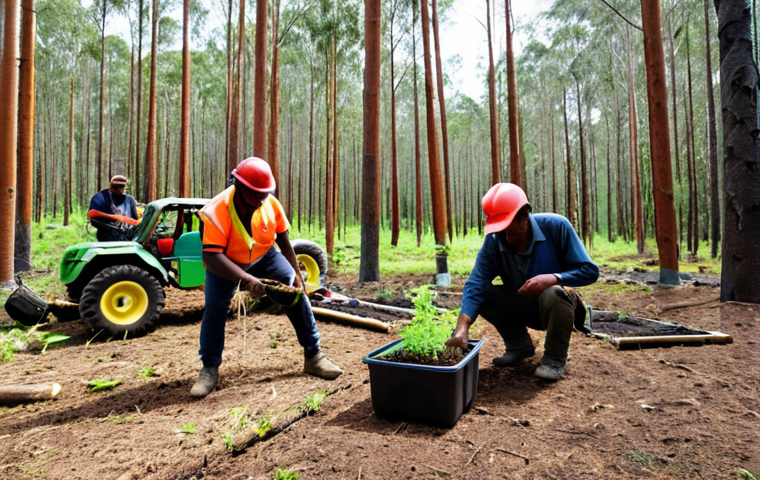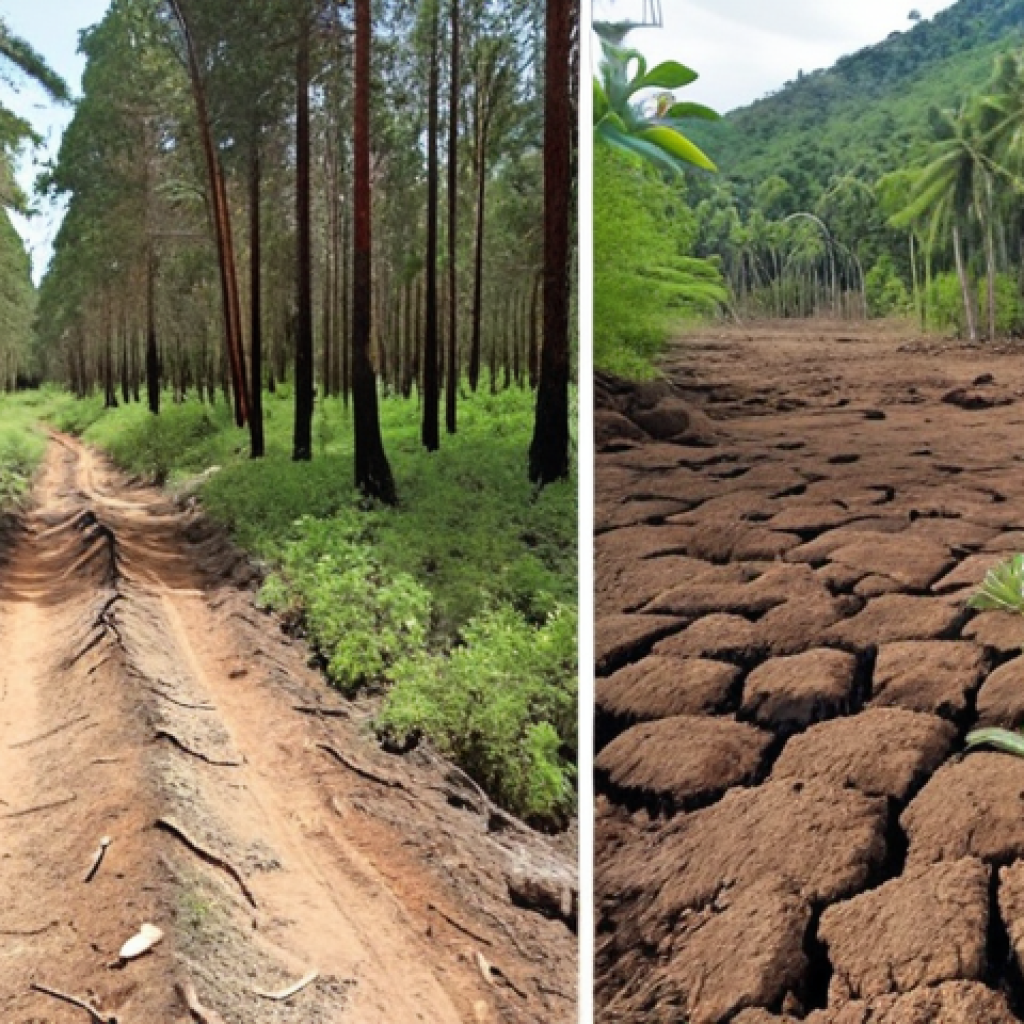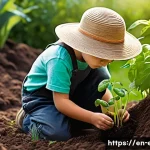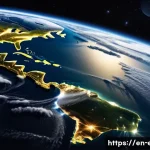The world’s forests, our planet’s green lungs, are facing unprecedented threats from deforestation, unsustainable logging, and climate change. These activities not only destroy vital habitats for countless species but also contribute significantly to global warming by releasing stored carbon dioxide.
But it’s not all doom and gloom! Across the globe, dedicated individuals and organizations are working tirelessly on reforestation projects, implementing sustainable forestry practices, and promoting conservation efforts.
From planting trees to restoring degraded landscapes, these initiatives offer a glimmer of hope for the future of our forests and the planet. The impact of these efforts goes beyond just planting trees; it’s about restoring ecosystems, supporting local communities, and safeguarding the many benefits that forests provide.
Let’s delve deeper and explore the intricate web of challenges and solutions surrounding forest conservation. Let’s get down to brass tacks in the article below!
The Ripple Effect: How Forest Loss Impacts Global Communities

Economic Hardship and Displacement
The destruction of forests isn’t just an environmental issue; it’s a socioeconomic one too. I’ve seen firsthand how deforestation rips apart communities that depend on the forest for their livelihoods. Imagine families who’ve harvested nuts or medicinal plants for generations suddenly finding their source of income gone. It’s devastating! These communities often face displacement, forced to migrate to urban areas where they struggle to find work and adapt to a completely different way of life. It’s a vicious cycle of poverty fueled by environmental destruction.
Increased Vulnerability to Natural Disasters
Forests act as natural buffers, protecting us from the worst impacts of natural disasters. I’ve witnessed how clear-cutting hillsides can lead to catastrophic landslides during heavy rains. The roots of trees hold the soil together, preventing erosion and absorbing excess water. Without this natural protection, communities become incredibly vulnerable to floods, mudslides, and droughts. It’s like removing the foundation of a house – the whole structure becomes unstable.
Erosion of Indigenous Cultures and Knowledge
For many indigenous communities, forests are not just a source of resources; they are deeply intertwined with their cultural identity and traditional knowledge. I’ve learned from elders in the Amazon about the incredible medicinal properties of plants that are only found in the rainforest. Deforestation not only destroys these precious resources but also erodes the cultural heritage and ancestral wisdom of these communities. It’s like tearing pages out of a history book – once it’s gone, it’s gone forever.
Innovations in Sustainable Forestry Management
Precision Harvesting Techniques
Gone are the days of indiscriminate clear-cutting. Today, innovative technologies are transforming how we manage forests. I recently visited a forestry operation that uses drones and GPS to map out individual trees, allowing for selective harvesting. This precision approach minimizes damage to the surrounding ecosystem, protects biodiversity, and ensures the long-term health of the forest. It’s like performing surgery with a scalpel instead of a chainsaw – much more precise and less invasive.
Community-Based Forestry Initiatives
The most successful conservation projects are often those that involve local communities. I’ve seen firsthand how empowering communities to manage their own forests can lead to sustainable practices and economic benefits. These initiatives provide training, resources, and access to markets, allowing communities to profit from sustainable forestry while protecting their natural heritage. It’s a win-win situation – the forest thrives, and the community prospers.
Certification Programs for Sustainable Wood Products
As consumers, we have the power to support sustainable forestry by choosing certified wood products. I always look for the Forest Stewardship Council (FSC) label when buying furniture or paper. This certification guarantees that the wood comes from responsibly managed forests. By demanding certified products, we send a clear message to the industry that we value sustainability. It’s like voting with your wallet – every purchase makes a difference.
The Crucial Role of Reforestation in Combating Climate Change
Carbon Sequestration: Trees as Natural Carbon Sinks
Trees are like nature’s vacuum cleaners, sucking carbon dioxide out of the atmosphere and storing it in their trunks, branches, and roots. I’ve been amazed to learn how much carbon a single tree can sequester over its lifetime. Reforestation projects play a vital role in mitigating climate change by removing greenhouse gases from the air. It’s like turning the clock back on global warming – one tree at a time.
Restoring Degraded Lands: From Wasteland to Woodland
Reforestation is not just about planting new trees; it’s about restoring degraded lands and bringing them back to life. I’ve seen how barren landscapes can be transformed into thriving ecosystems through careful planning and planting. These projects can also improve soil health, increase water availability, and provide habitat for wildlife. It’s like giving a patient a new lease on life – watching them recover and thrive.
Promoting Biodiversity through Reforestation
When planning reforestation projects, it’s essential to prioritize biodiversity. I’ve learned that planting a variety of native tree species is crucial for creating a healthy and resilient ecosystem. This provides habitat for a wide range of animals and plants, increasing the overall biodiversity of the area. It’s like creating a tapestry of life – each thread contributes to the beauty and complexity of the whole.
The Economic Incentives for Forest Conservation
Ecotourism: Capitalizing on Nature’s Beauty
Forests can be a major draw for tourists, creating economic opportunities for local communities. I’ve seen how ecotourism can generate revenue through guided hikes, wildlife watching tours, and sustainable lodging. This provides an incentive to protect forests and preserve their natural beauty. It’s like discovering a goldmine – but instead of digging it up, you protect it and let it generate sustainable income.
Sustainable Timber Harvesting: A Long-Term Investment
Sustainable timber harvesting can be a viable economic activity if done responsibly. I’ve learned that carefully managing forests for timber production can provide a steady stream of revenue while also protecting the environment. This requires implementing best management practices, such as selective harvesting and replanting. It’s like farming – you need to nurture the land to ensure a good harvest year after year.
Carbon Credits: Trading Carbon for Conservation
Carbon credits provide a financial incentive for forest conservation by allowing companies to offset their carbon emissions. I’ve seen how these credits can generate revenue for forest owners who protect their trees. By selling carbon credits, forest owners can receive payments for the carbon stored in their forests. It’s like getting paid for doing good – protecting the environment and fighting climate change.
Challenges and Obstacles in Forest Conservation Efforts
Illegal Logging: A Persistent Threat
Despite all the progress in forest conservation, illegal logging remains a persistent threat. I’ve heard stories of organized crime groups devastating forests for profit, often with little regard for the environment or local communities. Combating illegal logging requires strong law enforcement, international cooperation, and consumer awareness. It’s like fighting a war – it requires constant vigilance and a multi-pronged approach.
Land Conversion for Agriculture and Development
One of the biggest drivers of deforestation is the conversion of forest land for agriculture and development. I’ve seen how forests are cleared to make way for cattle ranches, palm oil plantations, and urban sprawl. This often happens because there is more economic value placed on these alternative land uses than on the forest itself. Addressing this challenge requires land-use planning, sustainable agriculture practices, and economic incentives for forest conservation. It’s like balancing competing interests – finding a way to meet the needs of people and the environment.
Lack of Funding and Resources for Conservation
Many forest conservation projects struggle to secure adequate funding and resources. I’ve learned that governments, NGOs, and private donors often prioritize other issues, leaving forest conservation underfunded. This lack of resources can hinder progress and limit the scale of conservation efforts. Increasing funding for forest conservation is essential for protecting our planet’s forests and the many benefits they provide. It’s like fueling a car – without enough gas, you can’t go very far.
Success Stories: Inspiring Examples of Forest Restoration
The Green Belt Movement in Kenya
The Green Belt Movement, founded by Nobel Peace Prize winner Wangari Maathai, is a powerful example of how community-based tree planting can transform lives and landscapes. I’ve been inspired by how this movement has empowered women to plant millions of trees, combating deforestation and poverty in Kenya. It’s like planting seeds of hope – transforming barren landscapes into thriving forests and empowering communities to take control of their future.
The Atlantic Forest Restoration Pact in Brazil
The Atlantic Forest Restoration Pact is a collaborative effort to restore one of the world’s most threatened ecosystems. I’ve learned that this pact brings together governments, NGOs, and private companies to plant trees, protect remaining forests, and promote sustainable land use. It’s like assembling a team of superheroes – each with their unique powers, working together to save the world.
The Great Green Wall Initiative in Africa
The Great Green Wall is an ambitious project to create a wall of trees across the Sahara Desert, combating desertification and improving the livelihoods of local communities. I’ve been amazed by the scale of this project, which involves planting trees in multiple countries across Africa. It’s like building a dam – holding back the desert and creating a more sustainable future for the region.
How You Can Contribute to Forest Conservation
Support Sustainable Products and Practices
- Buy certified wood products with the FSC label
- Reduce your consumption of paper and other forest products
- Support companies that are committed to sustainable forestry practices
Get Involved in Local Conservation Efforts
- Volunteer with local tree planting organizations
- Participate in forest cleanups and restoration projects
- Educate your friends and family about the importance of forest conservation
Donate to Forest Conservation Organizations
- Support reputable organizations that are working to protect and restore forests
- Consider donating to reforestation projects in developing countries
- Advocate for policies that support forest conservation and sustainable land use
| Challenge | Impact | Solution |
|---|---|---|
| Deforestation | Habitat loss, climate change, soil erosion | Reforestation, sustainable forestry, protected areas |
| Illegal Logging | Economic loss, environmental damage, corruption | Law enforcement, international cooperation, certification |
| Land Conversion | Loss of biodiversity, ecosystem degradation, community displacement | Land-use planning, sustainable agriculture, economic incentives |
| Climate Change | Increased wildfires, droughts, pest outbreaks | Carbon sequestration, climate mitigation, adaptation strategies |
| Lack of Funding | Limited conservation efforts, slow progress, missed opportunities | Increased investment, public-private partnerships, innovative financing |
In Conclusion
Protecting our forests is a multifaceted challenge, but it’s one we must tackle head-on. From supporting sustainable products to getting involved in local conservation efforts, every action, no matter how small, contributes to a healthier planet. Let’s remember that the future of our forests is in our hands, and together, we can make a lasting difference.
Useful Facts to Know
1. The Forest Stewardship Council (FSC) label guarantees that wood products come from responsibly managed forests. Always look for this label when purchasing wood or paper products.
2. Reforestation projects not only help combat climate change but also improve soil health and provide habitat for wildlife.
3. Ecotourism can generate revenue for local communities, providing an incentive to protect forests and preserve their natural beauty.
4. Illegal logging remains a significant threat to forests worldwide, requiring strong law enforcement and international cooperation to combat.
5. Community-based forestry initiatives empower local communities to manage their own forests sustainably, leading to economic benefits and environmental protection.
Key Takeaways
Deforestation has far-reaching impacts on global communities, including economic hardship, increased vulnerability to natural disasters, and erosion of indigenous cultures.
Innovations in sustainable forestry management, such as precision harvesting techniques and community-based initiatives, are transforming how we manage forests.
Reforestation plays a crucial role in combating climate change by sequestering carbon dioxide and restoring degraded lands.
Economic incentives, such as ecotourism, sustainable timber harvesting, and carbon credits, can promote forest conservation.
Challenges such as illegal logging and land conversion require strong law enforcement, international cooperation, and sustainable land-use planning.
Frequently Asked Questions (FAQ) 📖
Q: What are the biggest threats facing the world’s forests right now?
A: Honestly, from what I’ve read and seen on documentaries, the triple whammy of deforestation for agriculture and development, unsustainable logging that wipes out entire areas, and the escalating impacts of climate change are really hammering our forests.
It’s like a perfect storm of destruction, each one amplifying the others. I was watching this thing about the Amazon, and it’s terrifying how much they’re losing every single day.
Q: Are there any concrete examples of successful reforestation or conservation projects happening around the world?
A: Absolutely! I stumbled across this amazing story about how communities in Costa Rica managed to turn the tide on deforestation through aggressive reforestation efforts.
They incentivized landowners to plant trees and actively protect existing forests, and the results have been incredible. It’s not just about planting saplings; it’s about restoring entire ecosystems and creating sustainable livelihoods for local people.
There are also initiatives in places like Scotland, where they’re rewilding areas by planting native trees and encouraging natural regeneration. It’s proof that with commitment and community involvement, we can actually reverse some of the damage.
Q: Besides large-scale projects, what can individuals do to support forest conservation?
A: That’s a great question, and I think a lot of people feel helpless about this. But honestly, even small choices can make a difference. Think about where your wood products come from – look for the Forest Stewardship Council (FSC) certification.
Support companies committed to sustainable practices. Reduce your overall consumption to lower the demand for resources that lead to deforestation. Even something as simple as donating to reputable conservation organizations or spreading awareness among your friends and family can have a ripple effect.
I personally switched to buying recycled paper products and make a point of supporting local businesses that prioritize sustainability – every little bit helps, you know?
📚 References
Wikipedia Encyclopedia
구글 검색 결과
구글 검색 결과
구글 검색 결과
구글 검색 결과
구글 검색 결과






